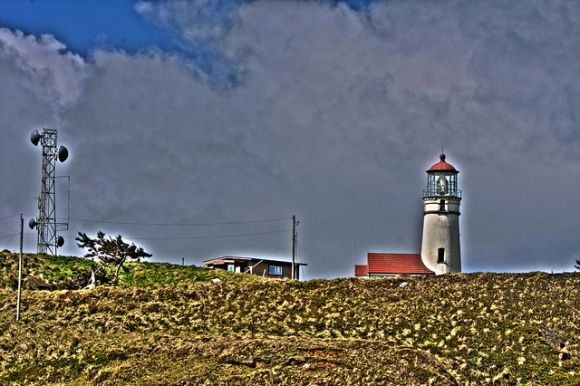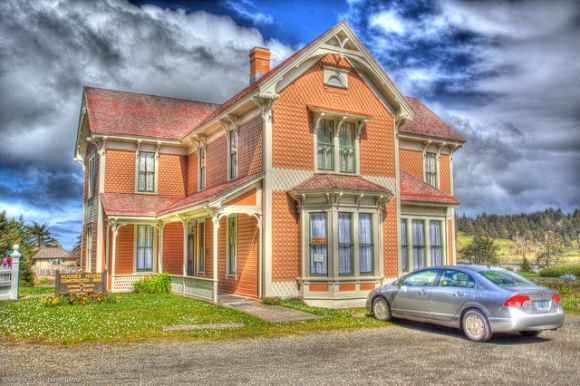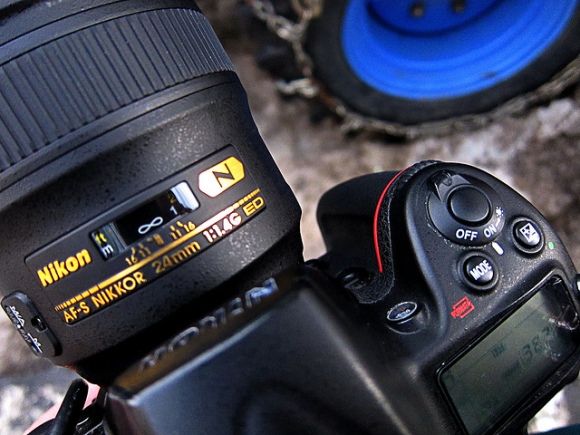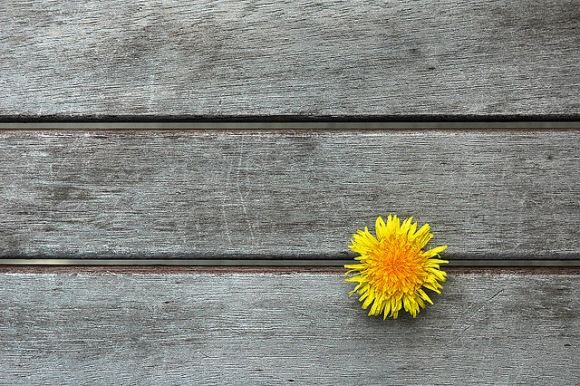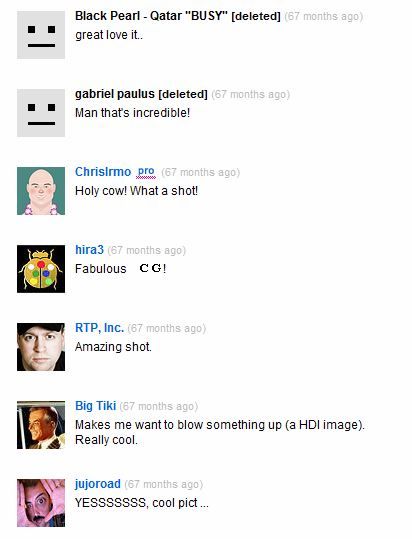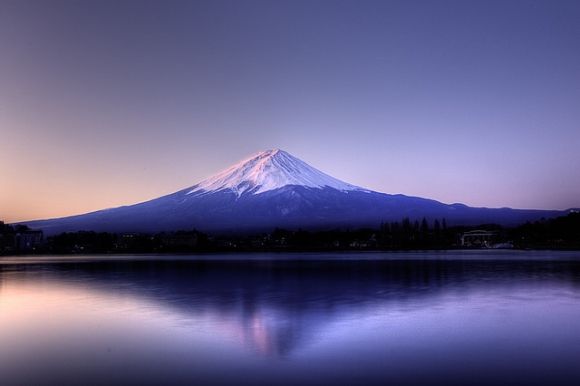HDR stands for High Dynamic Range, and in photographic terms generally produces an image with even highlights, midtones and shadows so the entire scene is balanced, and evenly exposed. Recently I’ve not been seeing much of this when it comes to HDR on the web. I’m talking about overdone, blown-out seizure-inducing "photographs" where each and every slider has been cranked up to 11. What happened? Did the novelty wear off or am I just a miserable sod?
It’s time for a step back. Let’s all reflect upon HDR, its overuse and what else is necessary to take a good photograph or become an accomplished photographer.
Examples
These two examples were both intentionally created to be bad but perfectly capture the essence of overdone HDR:
1. Learn How To Use Your Camera
So you’ve bought/inherited/won/found a decent camera. It’s a digital SLR, it shoots RAW, has changeable lenses and a lot of modes and settings to play with. Before googling the sweetest “how to HDR the crap out of your back yard” tutorial, it’s worth taking the time to master your camera.
Photography is an extremely accessible hobby these days, but also one that requires a bit of technical knowledge. This shouldn’t put newbies off. Basic concepts that will vastly improve understanding of photography and how your camera works include aperture, shutter speeds, ISO settings, your camera’s primary modes, metering and white balance (amongst others).
It might take you a week to get the basics right but months of practice are generally required before you’re at ease with every function. Don’t fret, it’s a rewarding process with results you can admire as your technique improves.
Download: MakeUseOf Guide - Essential Guide To Digital Photography
Read: How To Read Your Camera’s Histogram And Take Perfectly Balanced Images
2. Composition & Subject
Unfortunately, simply squeezing the shutter and firing off 3 bracketed shots is not enough to create an interesting image. What I’m saying here is Photomatix or Photoshop will not produce a particularly interesting photograph.
Composition is one of the most important considerations to make before taking a photograph. Sure, you can spruce up a dull photo in post but if the photo is dull in the first place it is likely that no amount of burning, dodging, masking or tonemapping will save it.
Learn about the rule of thirds. Hit up Amazon or head down to a good bookshop and pick up relevant guides on photography, other photographers work and do your research. When looking at a striking image ask yourself what it is about the image that makes it so powerful? For the most part subject and composition have far more value than darkroom or Photoshop tweaks.
Links: Digital Photography School - Composition Tips
3. Critique Or "You’re Doing It Wrong"
Flickr doesn’t count. Sorry, but I’ve seen plenty of badly overdone HDR shots on Flickr awarded all manner of dancing animated .GIF “Ur photo rox” awards - and it’s really not helping anyone. Getting proper critique will improve your technique as you learn from your mistakes. Flickr is not the way to go.
Message boards are usually the answer. There are a huge amount of dedicated photo communities out there that encourage proper criticism. I can’t help but feel endless lists of “this is amazing!” comments on uninteresting and gaudy tonemapped images are only fuelling the fire. Add to the fact that Flickr allows the deletion of comments....
Links: Photography Review - The Power of Photo Critique, Jim M. Goldstein - Top 10 Most Annoying Photography Critique Comments
4. Photoshop
All modern digital SLRs shoot RAW, which is an uncompressed image format that allows for some serious processing in Photoshop or other image editors. RAW files allow values such as white balance and exposure to be modified in order to save or enhance a photo. Learning how to tidy up non-HDR photos before diving into tonemapped HDRs bodes well.
There are also alternatives to HDR in some occasions, and it’s probably worth learning about those too. Masking and precise adjustments require more work than selecting 3 files and moving some sliders about, but generally produce more natural and refined images. Check out our Photoshop articles and guides for some great advice.
Download: MakeUseOf Guide - An Idiot’s Guide To Photoshop [Part 1] [Part 2]
Read: How To Edit RAW Photos In Adobe Camera RAW, 4 Great Tools For Editing RAW Photos In Linux
5. Using HDR Appropriately
I’m not saying all HDR is bad, and there is a time and a place for it. Graduated neutral density filters are great for exposing perfect skies for stunning landscapes, but unless your horizon is fairly straight you’ve got an issue. In these instances, sure - why not?
Try to resist the urge to jack everything up to 11. Consider your shot first. People generally look a bit alien in HDR, and if there are halos (glowing edges where exposures have been blended) appearing on the image then chances are you went a bit too far.
The best HDR shots I’ve seen were not obvious tonemapped images, and thus didn’t scream "HDR w00t!" upon first glance. Just saying...
Conclusion
HDR is a technique designed to create balanced, evenly exposed images. Unfortunately it’s been done to death, and much of the time is painful to look at. Of course this is my opinion, and we’d love to hear what you’ve got to say in the comments.
What do you think? Awesome neat-o technique or done to death? Do you use HDR?
Image Credits: densaer, Focal Intent, D700 + 24mm f1.4G by Fried Toast, The Rule of Thirds by fd, Rainbow Fuji (natural HDR) by Starfires


